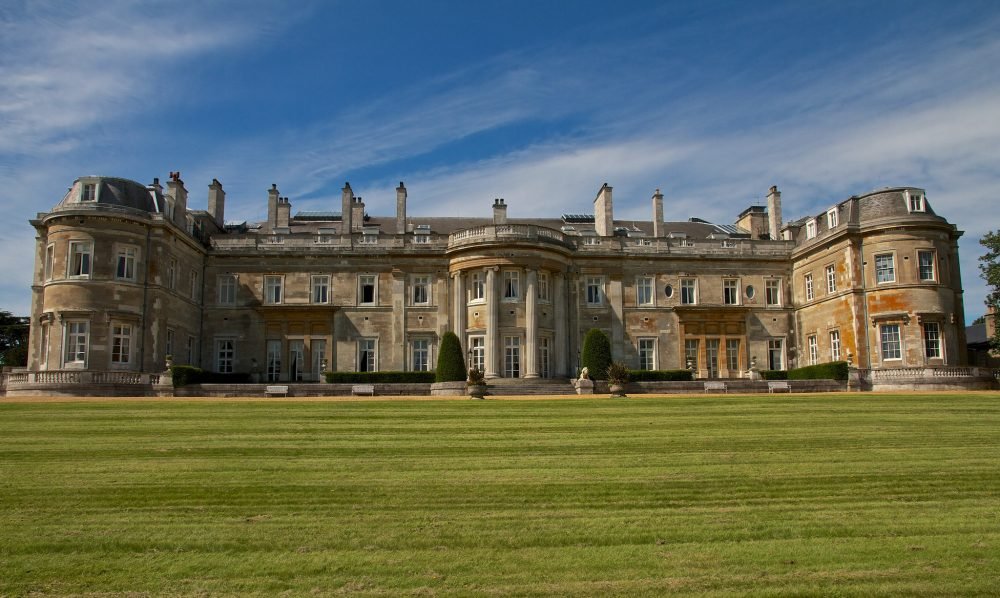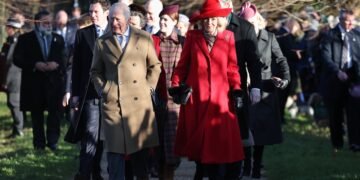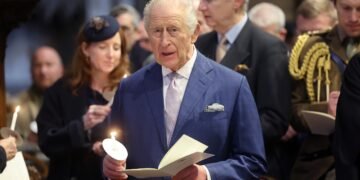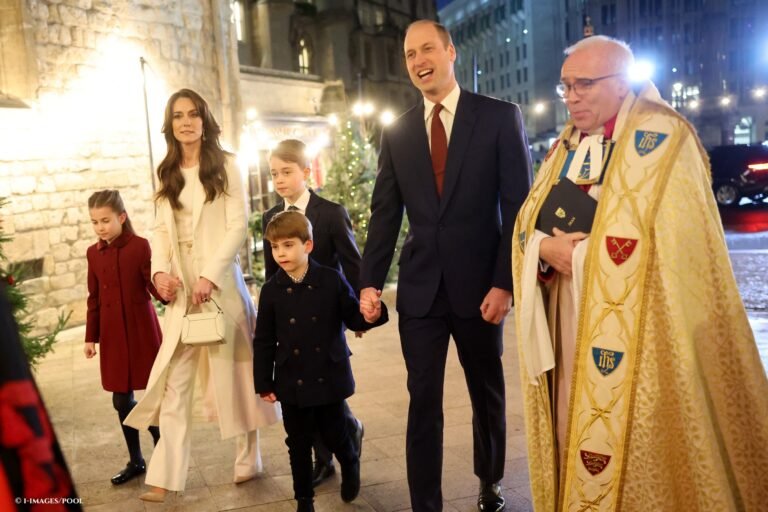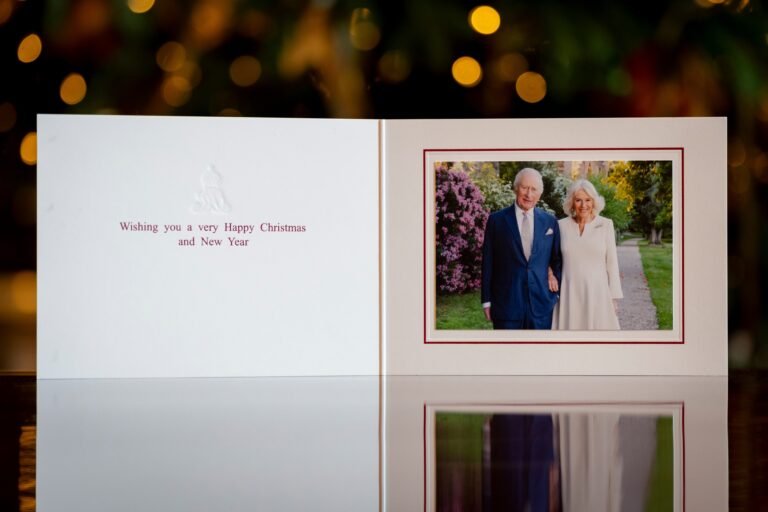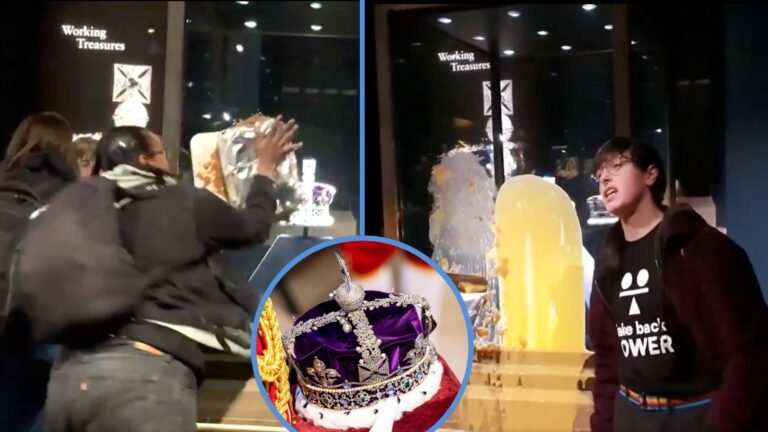A house that has connections to the British aristocracy, the Romanovs, the British Royal Family and diamond mines has got to be a winner – Luton Hoo certainly has a plethora of historic stories to tell.
Situated a few miles outside of Luton town, there has been a settlement at Luton Hoo since at least the Roman era, but the story of the house really begins in 1601, during the late reign of Elizabeth I: Robert Sandy, also Robert Napier, acquired the manor and estate.
And here is Luton Hoo’s first royal connection: the new King James I knighted Napier in 1611, and seems to have stayed on the estate during a royal progress.


After a time in the Napier family, it changed hands again, before being sold to John Stuart, 3rd Earl of Bute – Prime Minister – in 1763. It was the Earl who began a programme of renovation at Luton Hoo, bringing in Robert Adam for the job, as he had done when he had Dumfries House built for himself in Cumnock, Ayrshire.
Capability Brown was also hired to remodel the landscape of the park; Luton Hoo was, according to Brown’s bank accounts, one of the first jobs he had.
LORD OF THE MANOR – SHUGBOROUGH HALL
Brown dammed the River Lea which cut through the parkland, and formed two lakes, one of which survives today, in what might be termed ‘the back garden’.
However, instead of a new mansion, the Earl got a heavily remodelled house. A fire interrupted works in 1771, but by 1774 the house, despite being incomplete, was inhabited; Dr. Samuel Johnson visited in 1781 and spoke of the house’s glory: “This is one of the places I do not regret coming to see….in the house magnificence is not sacrificed to convenience, nor convenience to magnificence”.

A stable block was also added by Adam, which survives today, forming the spa facilities and further bedrooms and suites for the hotel, plus another restaurant.
The house stayed rather the same until the early decades of the 19th century: Stuart’s great-grandson, John Crichton-Stuart, 2nd Marquis of Bute, had Sir Robert Smirk – who designed the British Museum and Eastnor Castle – draw up plans for a new palladian west front (now the front of the property) in 1825; he desired a portico with wings and bows that reflected the east wing of Adam’s design and completion of the frontage that Adam didn’t see completed.
A fire gutted the mansion’s interior in 1843, and seemingly discouraged, the Marquis sold the estate to John Shaw-Leigh, who was a solicitor from Liverpool. Shaw-Leigh, on the advice of Smirke’s younger brother, restored the house, except for the north wing, which was left as a shell.
His son, John Gerrard-Leigh, took on the project of finishing the house in 1873, adding a chapel by George E. Street; this chapel was destroyed in 1940. His death in 1875 saw the estate pass to his widow, whose next husband let Luton Hoo to Sir Julius Wernher in 1900, and agreed to sell it in 1903.


In the intervening years, however, there was another royal visit. Queen Victoria visited with her son, when Princess Mary ‘May’ of Teck was there. It was in the conservatory on the south side (which no longer exists) that Mary and Albert Victor – who died just a few months later – became engaged in 1891.
Wernher was a German diamond dealer, who became naturalised in Britain in 1897; he had worked for Jules Porges and helped him to become the largest importer of South African diamonds into London. Eventually he took over the company and settled in the capital, marrying Alice Sedgewick Mankiewicz in 1888.
He renovated Luton Hoo, largely to please his wife, who was a prolific entertainer: Alice enjoyed the social life that her husband’s wealth afforded.
But art was Wernher’s passion – yes that Wernher! His collection grew over the years, including paintings, ivories, silver, and bronzes, filling the rooms at Luton Hoo. He commissioned Charles Mewes and Arthur Davis to give the interior an overhaul, influenced by his love of the Ritz Hotel, which sat opposite his London home.
One of the main architectural changes here was a mansard roof, to give more room for staff, but the interiors were transformed.

You are welcomed into a rather grand hallway, befitting a house of this kind.
LORD OF THE MANOR – HIGHCLERE CASTLE
The Dining Room was based on that of the Ritz, influenced by the Mirrored Hall of Versailles. Marble wall coverings and Beauvais tapestries are the impressive elements to attract the attention first, but on further notice, the crystal chandeliers – with rather large pendants – glimmer yellow and pink in the light. It is truly spectacular.


Similarly the staircase was a reconstruction of the Ritz, complete with marble statue by Bergonzoli, entitled ‘The Love of Angels’. The staircase hugs the rounded walls and sweeps up to the first floor.
Clever tricks make the house seem lighter: white tiles in the shafts from the ceiling to the roof help elevate the house’s interior.
Expense became an issue in this transformation of the house, but it was eventually completed on a grand scale and declared a triumph.

Wernher’s money also went to philanthropic causes, like the Edward VII Hospital (where the Royal Family are treated today) and Imperial College.
World War Two saw the house sequestered by the government and Eastern Command, playing an important role in war-time Britain. Luton Hoo is located near to the Vauxhall workshop, where tanks were built, and then tested on the land. Camps and huts were built across the Capability Brown parkland, and rooms were altered for other purposes, such as a hospital, where numerous babies were born.
Just off this hallway is the Churchill suite, that was used by the man himself as an office during the government’s occupation of the house. Today, it holds copies of some of Churchill’s distinctive paintings, and of course, a portrait of Sir Winston. It is now typically used for meetings.

Sir Harold Wernher was the-then occupant of the house, after inheriting it following his mother’s death in 1922; his son, Alex, was killed in the war, eerily mimicking the death of Sir Julius’ son, also named Alex, in World War One.
Harold’s wife was Lady Zia, or Countess Anastasia Mikhailovna of Torby, the daughter of Grand Duke Michael Mikhailovich of Russia, who was a grandson of Tsar Nicholas I of Russia. Zia was also a cousin of Nicholas II.
Their granddaughter, Natalia, married the late Duke of Westminster, Gerald Grosvenor; Natalia’s eldest daughter married Edward van Cutsem, and one of their younger daughters, Edwina, is married to popular historian, Dan Snow.
It is this Russian heritage that saw an Orthodox chapel installed in the house, which remains today. Complete with a portrait of Tsar Nicholas II, the ornate room is no longer consecrated, and so is used for wedding breakfasts instead of the ceremony itself.


The Pillared Hall is now a lounge space with bar, but was once Lady Zia’s living room; she had her TV where the piano is. Walls throughout the house – now a hotel – hold family portraits and classical scenes, all that you expect from a stately home.
Next door is the drawing room and on the other side, just off the corridor, is the wernher restaurant, as seen above.

The next big event at Luton Hoo was Winston Churchill’s visit in 1946, when he addressed some 110,000 people outside of the house; the Prime Minister thanked the people of Bedfordshire and Luton for their support during the war.
The couple decided to move back into the house after the war, and exhibit Sir Julius’ wonderful collection. This, however, meant alterations were needed in the house to accommodate visitors and display the items; the house was effectively split, with displays in the south wing. Work was undertaken by Phillip Tilden, who was careful to to disrupt the interiors.
Members of the public could view the collection from 1951, which was added to by Sir Harold and Lady Zia in the form of furniture and silver, as well as Zia allowing her Faberge to go on display. She had pieces such as clocks, models of animals (mostly elephants) and picture frames.
Another royal link comes in at this point: Princess Elizabeth and The Duke of Edinburgh stayed at Luton Hoo for a few days during their honeymoon, following their stay at Broadlands, and for almost every wedding anniversary thereafter, ending the weekend with a pheasant shoot.
A couple of photos from some of their visits are displayed in the hotel as a reminder of this connection. The Royals were good friends of the family, having mixed in similar circles after Zia’s father fled Russia for England at the time of the revolution.

Two of the suites are named after the royal couple, and are – of course – connected by an interlinking door. While the suites no longer resemble how Elizabeth and Philip used them, we do have an old photo to show what it did look like: green silk walls have been replaced with red, and the Holland & Holland furniture, a few pieces of which were Arabian in style.


Paintings of the royal residences now decorate the walls instead, another nod to its former royal guests.
A passion shared by Lady Zia and The Queen is racing; Zia owned Charlottetown, the horse that won the Epson Derby in 1966, an achievement Her Majesty is still yet to reach.


The royal friendship continues with Zia’s children: Lady Kennard and Lady Butter
Unsurprisingly, Luton Hoo was awarded a Grade I listing back in 1977. It was also round this time that the family opened up Luton Hoo for corporate events and filming, in order to support the large and expensive to maintain collection.
To avoid death duties the Wernher estate donated the Wernher Triptych to the British Museum. Now, the real Wernher Collection is on display at Ranger’s House in Greenwich, but Elite Hotels who took over some 10 years ago, have been careful to replace these items with very good replicas – in fact, they have spent £60 million restoring Luton Hoo to its former glory.

Today, there are drawings of items from the collection hanging throughout, to remind you of the pieces that once lived there; some are truly spectacular, especially the Faberge.
Nicholas Phillips tried to keep the estate afloat, but at the time of his death in 1991 – an apparent suicide – he was £30 million in debt. It was at this point, the family realised they couldn’t keep the house and estate, and sold it.
Luton Hoo has also been the location for a number of films, including Four Weddings and a Funeral (that scene where Hugh Grant hides in a bedroom cupboard because the married couple have gotten over-amorous).
The house’s ballroom – now called the drawing room – is complete with sprung beech floor, and was once used for grand entertaining. Now it is the location in which guests take their afternoon tea. It has wonderful views out onto the gardens, and is flanked by a library (with a portrait of Robert Adam) and another similarly-proportioned room that is used for wedding services.


One of the nicest touches for me when I visited, was the use of coal fires throughout. Hearing the crackle of a real fire and noting that distinct burning smell added an edge of cosiness, despite the grandeur, and was certainly reminiscent of how Luton Hoo must have felt in its heyday.
Four times per year, ladies’ luncheons are held with various talks and demonstrations held, plus a three-course lunch, as are ‘meet the winemaker’ events. In the summer, the National Garden Scheme opens the hotel grounds to allow people to explore the landscape with its head gardener.
Part of my visit to Luton Hoo included one night’s complimentary stay plus dinner and breakfast. While this visit was free, my review is wholly unbiased and based on my personal experience.
We stayed in the Lady Butter suite, the room used in ‘Four Weddings’ and were amazed at its size and facilities. The bed was so comfortable, and we loved that the bath had jets in it! And who doesn’t love complimentary Molton Brown toiletries and a heated floor in the bathroom?!
It was simply all the little touches, like the replicas used across the house, the standard of furnishing, the free taxi service down to the stable block (spa, golf centre and restaurant) and the tranquil landscape that made our trip. They also offer things like wellies should you like to walk across the estate, boardgames and DVDs, as well as spa facilities, golfing and shooting for all abilities.



You can book a room at the hotel – including the lady Butter or Queen Elizabeth suites, found under ‘Mansion master suites’- here or simply spend the afternoon supping tea and eating cakes! Go here.
Also, until the end of March, the hotel is offering a 2 for 1 deal, so you can spend the weekend here, without feeling *too* guilty.

